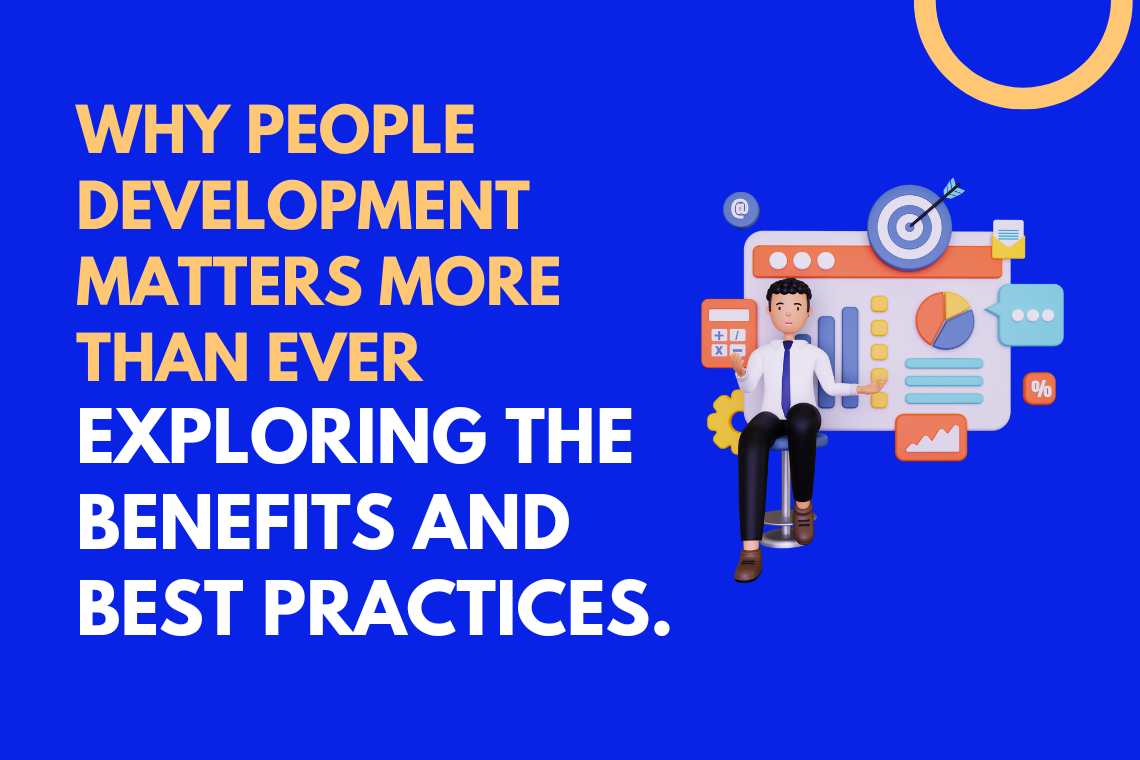The success of any organisation in today's rapidly changing business landscape depends on the quality of its workforce. However, hiring talented employees is not enough to guarantee success. To truly excel, organisations must focus on developing their people to their fullest potential. In this article, we will explore why people development matters more than ever and provide best practices for achieving success in this area.
Importance of People Development
People development is crucial in today's job market where top talent is in high demand. By investing in the growth and development of employees, organisations can attract and retain the best employees and keep them engaged over the long term.
Moreover, people development is beneficial for businesses as well. The following statistics highlight its importance:
- Companies with strong learning cultures, according to a LinkedIn report, are 46% more likely to be the leader in their industry and 58% more prepared to meet future demands.
- Millennials prioritise learning and development opportunities when choosing an employer, as found by a survey by PwC. Millennials will make up the majority of the global workforce by 2025.
- Organisations that prioritise employee development have 2.3 times higher cash flow per employee and are 17% more likely to be market leaders, according to a study by Deloitte.
By investing in training and development programs, organisations can enhance the skills and capabilities of their workforce, leading to improved productivity, better decision-making, and higher quality work. Additionally, nurturing talent from within can reduce the reliance on costly external hires and develop a strong bench of leaders to drive the company forward.
Best Practices for People Development
So how can organisations ensure they are doing people development right? Here are some best practices to consider:
1. Clear Vision and Strategy: A successful learning organisation has a clear vision and strategy that aligns with its overall business objectives. The organisation should have a plan for continuous learning and improvement and a willingness to adapt to changing circumstances.
2. Supportive Culture: A supportive culture is critical to creating a successful learning organisation. Employees should feel encouraged to share their ideas, take risks, and learn from their mistakes. Leaders should foster an environment of trust and openness, where learning and development are valued.
3. Emphasis on Continuous Learning: A learning organisation should have a strong emphasis on continuous learning. Employees should have access to ongoing training and development opportunities and should be encouraged to learn new skills and explore new areas of expertise.
4. Focus on Knowledge Management: A successful learning organisation should have a system in place for capturing and sharing knowledge. This includes creating a knowledge base, documenting best practices, and sharing information across the organisation.
5. Data-Driven Decision Making: A learning organisation should use data to make informed decisions. This means collecting and analysing data to understand performance, identify trends, and inform learning and development initiatives.
6. Collaboration and Teamwork: A successful learning organisation should foster collaboration and teamwork. Employees should be encouraged to work together on projects and share their knowledge and expertise.
7. Leadership Commitment: A successful learning organisation requires commitment from the top. Leaders should set the tone for learning and development and demonstrate their own commitment by participating in training and development programmes.
8. Flexible and Adaptable: A learning organisation should be flexible and adaptable, able to respond quickly to changing circumstances. This means being open to new ideas, embracing innovation, and being willing to take calculated risks.
9. Technology Integration: A successful learning organisation should leverage technology to support learning and development initiatives. This includes using learning management systems, e-learning platforms, and other tools to enhance the learning experience.
10. Measure and Evaluate Learning Outcomes: A learning organisation should measure and evaluate the outcomes of its learning and development initiatives. This means tracking the effectiveness of training programmes, assessing employee performance, and using feedback to continuously improve.
Conclusion
People development is more important than ever in today's fast-paced business environment. By investing in the growth and development of your employees, you can attract and retain top talent, improve business outcomes, and build a strong and sustainable organisation for the future. By following best practices and making people development a priority, you can set your organisation up for success.
--
We hope you enjoyed the article! Be sure to share our article if you found this helpful. :)
